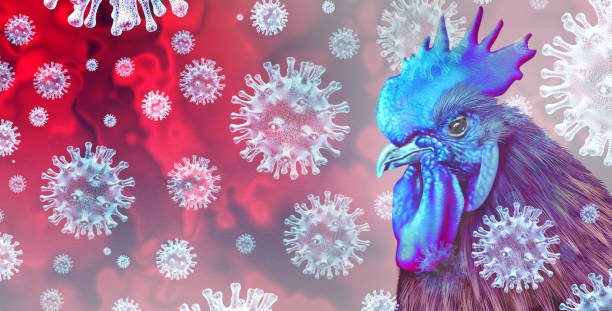So, what is this virus? Where does it come from? Is this a checkmate for us? Let's delve deeper into the details.
What is H5N1?
H5N1 is a subtype of the influenza virus, commonly known as bird flu or Avian Influenza. It primarily infects birds but can also infect humans who come into contact with infected birds. Since 1997, only around 1000 known human cases have been registered worldwide, with approximately 50% of those infected succumbing to the virus. Currently, there is no evidence of human-to-human transmission of H5N1, but the pattern observed in similar viruses suggests that we should remain vigilant. For instance, COVID-19 initially spread among animals such as bats, raccoon dogs, and gorillas before it evolved to infect humans.
Origin and Spread of H5N1
The H5N1 virus first emerged in 1996 in domestic waterfowl in Southern China. The strain, named A/goose/Guangdong/1/1996, caused outbreaks in poultry in China and Hong Kong, with the first human cases reported in Hong Kong in 1997. Since then, the virus has evolved and spread to various parts of the world, affecting both wild birds and domestic poultry. Due to its highly pathogenic nature, significant efforts have been made to control its spread through the culling of infected birds. Although the virus’s ability to infect humans is relatively rare, when it does, it can cause severe respiratory illness. Continuous monitoring and research are crucial to understand the virus’s evolution and to prevent potential future outbreaks that could pose a risk to human health.
Pandemic Potential
Both H5N1 bird flu and other pandemic viruses like SARS-CoV-2 (COVID-19) are believed to have originated from zoonotic spillover events, meaning they jumped from animals to humans. The H5N1 virus originated in birds, while SARS-CoV-2 is thought to have originated in bats before possibly passing through another animal host. While H5N1 has not shown the same level of human-to-human transmission as SARS-CoV-2, there is always the potential for the virus to mutate and become more transmissible among humans. The spread of H5N1 among different species, including mammals, raises concerns that it could adapt to humans more easily, increasing its pandemic potential.
Classification and Structure of H5N1
H5N1 is classified based on two key surface proteins: hemagglutinin (H) and neuraminidase (N). These proteins are essential for the virus to infect host cells and are recognized by the immune system to fight the virus. There are 18 subtypes of hemagglutinin (H1 to H18) that help the virus bind to and enter host cells, and 11 subtypes of neuraminidase (N1 to N11) that assist in releasing new virus particles from infected cells. The virus subtypes are named by combining the H and N numbers, such as A(H1N1) or A(H3N2). This classification helps scientists identify and track different strains, which vary in their level of danger and the species they infect. This information is crucial for monitoring the virus's evolution and developing vaccines, like the annual flu shot that targets the most common subtypes of the influenza A virus.
Conclusion
The H5N1 bird flu virus represents a significant threat due to its high fatality rate and potential for mutation. While human-to-human transmission has not yet been observed, the virus's ability to infect multiple species raises concerns about its pandemic potential. Continuous monitoring, research, and proactive measures are essential to prevent a potential outbreak. Understanding the virus's structure, origin, and transmission pathways will be crucial in developing effective strategies to combat it and protect global public health. The WHO's warning serves as a crucial reminder of the importance of vigilance and preparedness in the face of emerging infectious diseases.











0 Comments